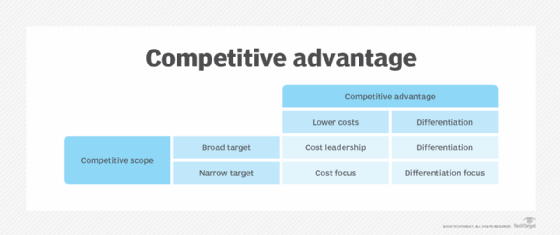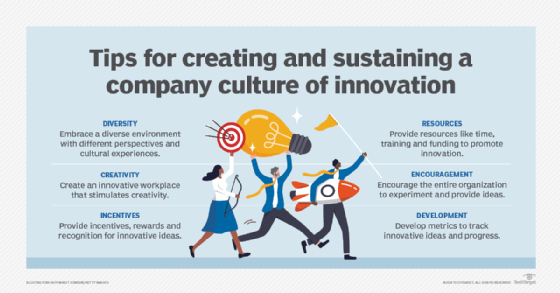What is strategic innovation?
Strategic innovation is an organization's process of reinventing or redesigning its corporate strategy to drive business growth, generate value for the company and its customers, and create competitive advantage. This type of innovation is essential for organizations to adapt to the speed of technology change.
To be successful, companies employing strategic innovation do not necessarily need to make changes to the goods and services they sell to their customers, nor to the technologies that support these products. Strategic innovation, which can be disruptive, often refers to innovation projects that occur at the executive level.

Importance of strategic innovation
With the rapidly changing business environment, strategic innovation is crucial for maintaining relevance and achieving long-term success. Companies that fail to innovate risk being overtaken by more agile and forward-thinking competitors.
Strategic innovation not only drives growth, but also enhances resilience by enabling organizations to anticipate and respond to market disruptions and emerging trends.

Strategic innovation considerations
Innovating corporate strategies could include the following considerations:
- What services or products need to be reinvented or developed.
- What markets to compete in.
- What business models to develop.
- How to optimize business processes.
- How to expand the customer base.
- How to position the company's brand to target customers.
- How to make the supply chain and value chain more efficient.
- How to implement a go-to-market strategy.
Executing strategic innovation processes
Although senior business leaders direct strategic innovation initiatives, they also need to foster a culture of innovation that encourages collaboration across business teams and functions. This involves creating an environment where employees feel empowered to share ideas and take risks without fear of failure.
Strategic innovation requires a systematic approach, including setting clear objectives, allocating resources effectively, and continuously monitoring and adjusting strategies based on performance metrics and market feedback. Successful execution often involves leveraging data analytics and customer insights to inform decision-making.
Examples of successful strategic innovation
The following are some well-known examples of companies that have seen success applying strategic innovation:
- Apple, which expanded the use of computers to individuals.
- IBM, which expanded from selling hardware to providing comprehensive offerings including software and services.
- Ikea, which standardized the type of product it sold, the flatpack.
- Nintendo, which expanded its customer base to include more women, adults and seniors with the launch of the Wii.
- Amazon, which transformed from an online bookstore to a global e-commerce and cloud computing giant.
- Tesla, which revolutionized the automotive industry with its focus on electric vehicles and renewable energy solutions.

Challenges in strategic innovation
Despite its benefits, implementing strategic innovation can be challenging. Common obstacles include resistance to change, limited resources and the complexity of aligning innovation initiatives with overall business goals.
Resistance to change often stems from organizational inertia and a reluctance to move away from established processes and structures. This can be particularly pronounced in large, established companies where longstanding practices and a risk-averse culture can stifle innovation. Limited resources, both financial and human, can also pose significant barriers.
Innovation initiatives often require substantial investment and the allocation of skilled personnel, which can be difficult to justify in the face of competing business priorities. Strategic innovation also requires a holistic approach that integrates new ideas and processes into the broader corporate strategy. This involves identifying and developing innovative strategies to ensure scalability and sustainability in the long term.
Another challenge is maintaining a balance between pursuing incremental improvements and more radical, disruptive innovations. While incremental improvements can provide steady, short-term benefits, they might not be sufficient to achieve long-term competitive advantage. Conversely, disruptive innovations can be risky and resource-intensive, with uncertain outcomes.
Overcoming these challenges requires strong leadership, a clear vision and a commitment to fostering an innovative culture throughout the organization. Leaders must champion innovation, provide the necessary support and resources, and create an environment that encourages experimentation and accepts failure as part of the learning process.
A clear vision helps align innovation initiatives with the company's strategic objectives through strategic planning, ensuring efforts are focused on areas with the highest potential impact. Fostering an innovative culture involves encouraging collaboration across departments, promoting continuous learning and development, and recognizing and rewarding innovative efforts.
In addition, leveraging external partnerships and networks can bring in new perspectives and expertise, further enhancing the organization's innovation capabilities.
Information technology is a key part of developing an effective strategic plan, itself essential to strategic innovation. Look at these free IT strategic planning templates that can help make IT a driving force in a business. Learn how to assess an organization's needs and implement a technology strategy and see how to set business goals in these step-by-step guides.






